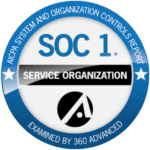Manual Freight Invoices Are Still a Big Problem in 2025: Here's Why
In an era of automation and EDI systems, it's easy to assume that freight invoice data has gone fully digital. But the reality is very different. Despite advances in technology, manual invoices, PDFs, spreadsheets, and even paper are still a major headache for freight audit and payables teams.
Why Manual Invoice Formats Persist
Thousands of freight invoices still arrive in emails, PDFs, and spreadsheets, each with unique layouts and columns. Standardizing them remains a tedious and time-consuming task.
Even as late as 2022, around 40% of BOL processes in containerized shipping relied on paper-based systems (U.S. Bureau of Transportation Statistics). That number hasn't improved as much as you'd expect.
Why This Matters
1. Error Rates Spike
Non-standard invoice formats lead to typos, data-entry errors, and missed line items, undermining audit accuracy.
2. It Costs You Time and Money
Automated freight payment software can reduce errors and costs, but manual workflows remain labor-intensive and risky.
3. Data Visibility Suffers
With invoice data tucked away in various folders, misspends go unchecked and opportunities for insights are lost.
What Audit and Payables Teams Must Do
- 1. Identify Manual Sources Track invoicing channels by carrier or broker and flag any that are sending PDFs, spreadsheets, or paper.
- 2. Standardize Intake Use email scraping tools, OCR, or data parsing routines to convert manual invoices into standardized formats quickly and reliably.
- 3. Target High-Risk Partners Identify which carriers or lanes produce the most manual invoices and errors. Prioritize automation for them.
- 4. Layer on Human Checks For remaining manual invoices, ensure a swift pre-payment check process. Prioritize common error keywords like 'Unauthorized' or 'Fuel surcharge.'
- 5. Push for EDI or API Integration Build business cases for carriers to adopt digital invoicing. Each automated lane saves time and reduces risk.
Final Takeaway
Manual freight invoices aren't just outdated they're a strategic risk. They create hidden error pools, delay payment cycles, and prevent teams from achieving full visibility. As carriers and brokers continue relying on PDFs and paper, Hatfield and Associates helps mitigate that risk by streamlining intake, flagging high-risk invoices, and leading digital transformation.




